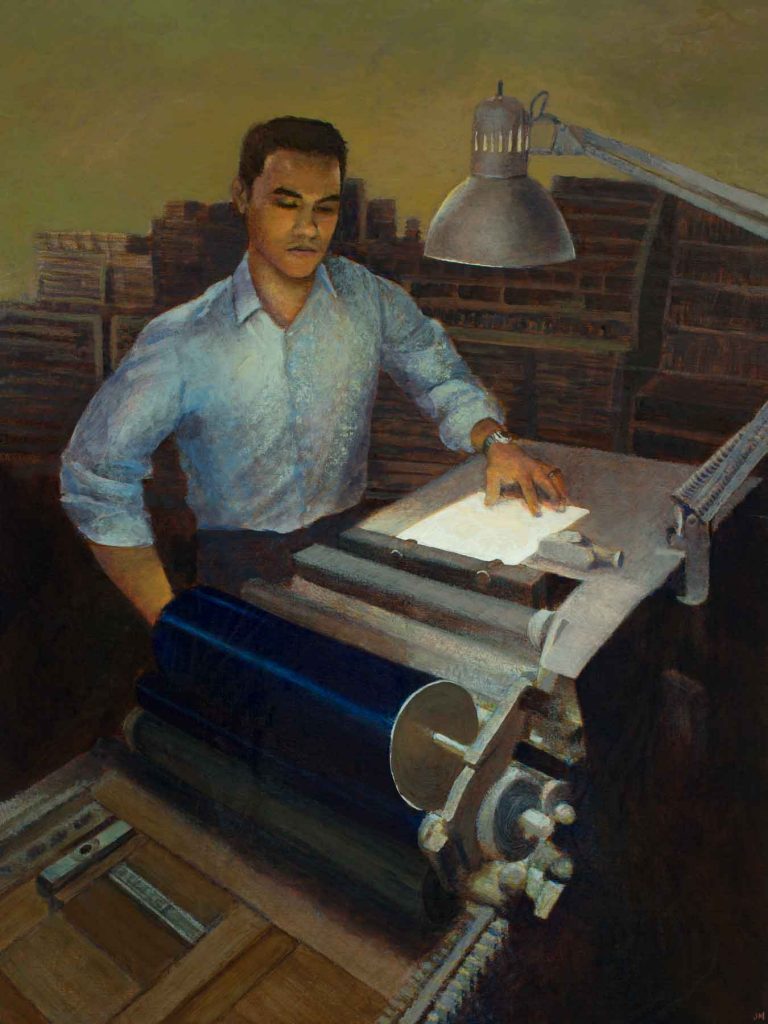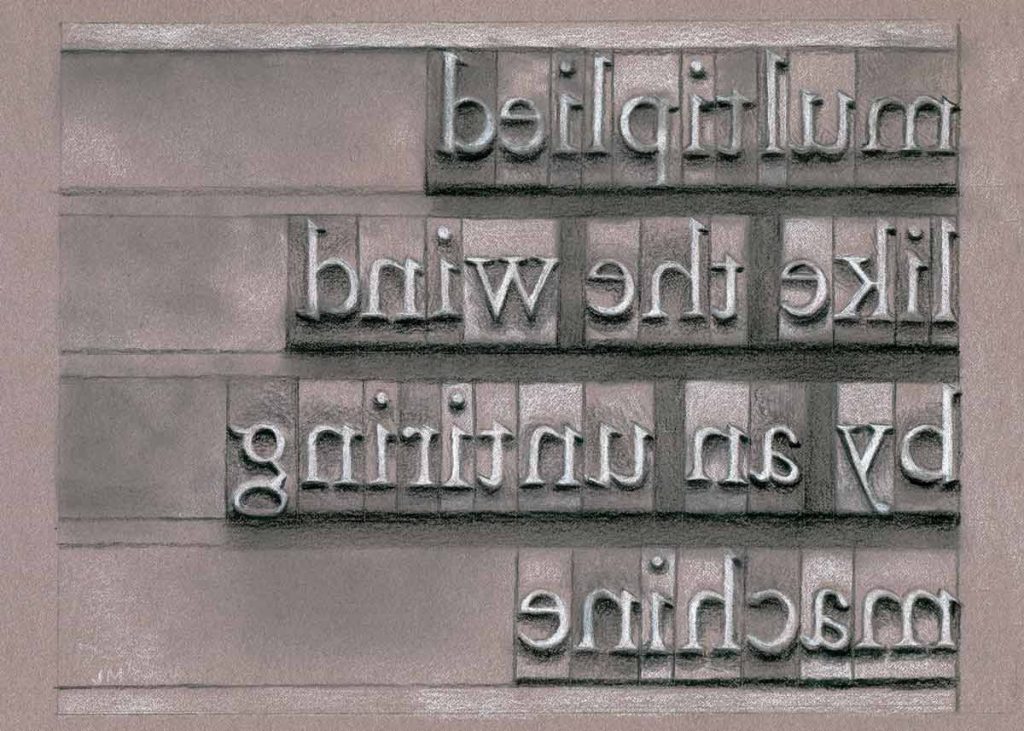ACRYLIC ON CANVAS • 18″ x 24″
$1200: Emilio Sets Type • Email julie@juliemeridian.com to buy this artwork ⇢
Typesetting is the first of seven technologies I’ve explored in Prior Art: analog media manipulation and vintage virtual reality.
Emilio Sets Type
“No matter how intellectual a pursuit it becomes, Design is most rewarding when you’re simply making it: setting the type, framing the shot, writing the code.”
Emilio Passi // epassi.co
The earliest words were written by hand: stamped in clay, etched with charcoal, drawn with ink. As scrolls developed into books, stories were collected through the painstaking and time consuming process of transcription. But this was a luxury, and only the wealthy could afford it.
Typesetting enables these stories to be composed by arranging pieces of type: physical stamps of letters and symbols that make up written language. This not only enables faster and cheaper reproduction of text, but also a consistent appearance. Instead of bearing the mark of the scribe, these printed materials now bear the distinctive look of a font (the design of those letters themselves). Print shops keep large wooden shelves with hundreds (or thousands) of pieces of type for a range of fonts and sizes.
Letterpress machines create the means of adding ink to a set of letters and transferring it to a piece of paper. The letter stamps are arranged into a tight block to preserve the format. This block is called a “lock up” because it is tightened by hand with a key to keep the pieces from moving around. Ink is spread onto one of the forward cylinders, and a piece of paper is aligned with the rst cylinder to begin. With a turn of a crank, the cylinders roll out to spread ink on the lock up, and roll the paper across it to create an inked impression.
The Ceramic Type of Bi Sheng
The first system of movable type was invented in the 11th century by Bi Sheng in China. He shaped clay into pieces representing hundreds of Chinese glyphs which he baked into a ceramic material. This material, a fine porcelain, was sturdy enough for the rigors of printing.
There are a few ideas about why this origin of type is less well known. As a commoner, Bi Sheng’s history was not recorded. We only know of his invention through a book printed at the time. The sheer number of glyphs for the Chinese language also made the process of creating a font onerous. Centuries later, when Johannes Gutenberg introduced mechanical movable type to the Western world, he had a much smaller glyph set to reproduce – a boon for mass production.
Gutenberg’s Untiring Machine
Johannes Gutenberg combined a number of innovations for movable type, oil-based ink, and adjustable molds to enable mass production of printed material. Since the printed result would contain a reverse image of what was laid out, a skilled typesetter would need to be able to read the text backwards (or use a mirror) to lay it out properly.
Gutenberg saw great potential in this mass production for the creation of Bibles, and is best known for his high-quality Gutenberg Bible. He spoke of these advancements here: “Let us break the seal which seals up holy things and give wings to Truth in order that she may win every soul that comes into the world by her word no longer written at great expense by hands easily palsied, but multiplied like the wind by an untiring machine.”





Leave a Reply